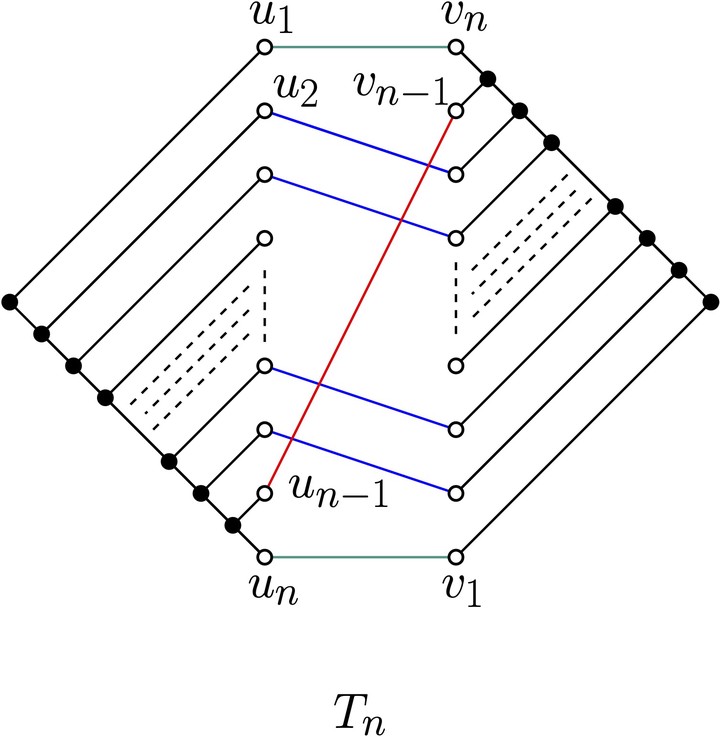 For any $n$-leaf tanglegram $T_n$, with $n\geq 4$, we have $crt(T_n)= n-3$
For any $n$-leaf tanglegram $T_n$, with $n\geq 4$, we have $crt(T_n)= n-3$
Abstract
Tanglegrams are special graphs that consist of a pair of rooted binary trees with the same number of leaves, and a perfect matching between the two leaf-sets. These objects are of use in phylogenetics and are represented with straightline drawings where the leaves of the two plane binary trees are on two parallel lines and only the matching edges can cross. The tangle crossing number of a tanglegram is the minimum crossing number over all such drawings and is related to biologically relevant quantities, such as the number of times a parasite switched hosts.
Our main results for tanglegrams which parallel known theorems for crossing numbers are as follows. The removal of a single matching edge in a tanglegram with $n$ leaves decreases the tangle crossing number by at most $n-3$, and this is sharp. Additionally, if $\gamma(n)$ is the maximum tangle crossing number of a tanglegram with $n$ leaves, we prove $\frac{1}{2}\binom{n}{2}(1-o(1))\le\gamma(n)<\frac{1}{2}\binom{n}{2}$. Further, we provide an algorithm for computing non-trivial lower bounds on the tangle crossing number in $O(n^4)$ time. This lower bound may be tight, even for tanglegrams with tangle crossing number $\Theta(n^2)$.